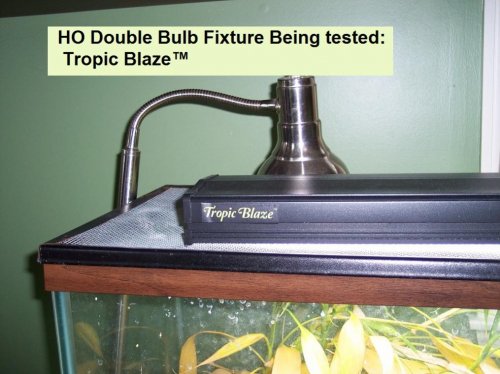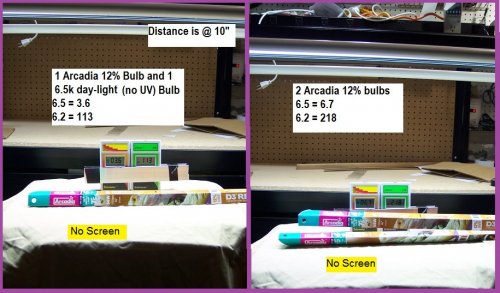......
the 6% 12% 5.0 10.0 are just marketing terms so you know a 12% puts out double the uvb of a 6%, and a 10.0 puts out double the uvb of a 5.0. You still need to know how much the reptile needs. Chams need 30-50µW/cm² or more to be healthy, bearded dragons and iguanas would need 150µW/cm² or more to be healthy.
Hi Night!
You know what you are talking about so I am not going to butt in....
too much.
LOL!
Just to clarify:
The way it works (in theory anyway) when talking about 5% , 6% 12% etc...
Is that when looking at the bulbs TOTAL light energy out-put in all wavelengths ...
it is the percentage that falls in the UVB range.
So in other words,
on an Arcadia 6% UV B bulb...
6% of the light emitted is in the UV B range
and
94% of the light is not.
It is comprised of the other wavelengths.
It could be in the visible range and some in the UV A (30%) ("black-light") range... and even a tiny bit as infra red... etc etc
And this is good rule of thumb advice:
Chams need 30-50µW/cm² or more to be healthy, bearded dragons and iguanas would need 150µW/cm² or more to be healthy.
But please remember,
it can ... and SHOULD vary some in a cage, just as it does in Nature --
between shade, partial shade and full sun.
OK.
now I am done butting in.
I hope you don't mind.
Thank you!
Todd
PS.
For your viewing pleasure....
Here is some of my ongoing daily testing:
Note:
The readings are without screen --- and at 10 inches.
so they are fairly potent!



